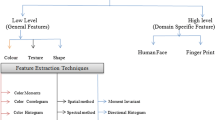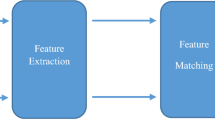Abstract
Content-based image retrieval (CBIR) is an automated process that seeks to retrieve similar/closer images from a large-scale image collection by extracting visual content from the images themselves. In general, CBIR systems consist of two main steps: 1) feature extraction and 2) feature matching. The extraction of features entails decreasing the amount of data required to describe a large set of data. Feature matching, on the other hand, is the process of comparing the extracted features from the query image to the extracted features from images in the database using a certain distance metric. Meanwhile, the extracted features of the query image are compared to those of the images in the database throughout the retrieval process, allowing each indexed image to be ranked according to its distance from the query image. This paper exploits to take the advantage from both global and local feature and hence a hybrid CBIR technique is devised which contains two layers of filtering. The first layer uses the Bag of Features (BoF) technique to compare the query image to all images in the database in order to eliminate/exclude as many dissimilar images as possible. This results in the retrieval of a number of images that are closer to the query image. The second layer aims to compare the query image to the retrieved images earned from the first layer. This is based on the extraction of texture-based and color-based features. The Local Binary Pattern (LBP) and Discrete Wavelet Transform (DWT) were used as texture features. Color features were also used from three distinct color spaces (RGB, HSV, and YCbCr). Entropy and mean of every single channel are measured. The experiments are carried out in details utilizing the widely used and well-known Corel-1 k database. In regards of precision rate, the experimental findings show that the proposed two-layer strategy outperforms existing state-of-the-art approaches, with top-10 and top-20 precision rates of 86.65% and 81%, respectively.







Similar content being viewed by others
References
Abdulla AA, Sellahewa H, Jassim SA (2013) Secure steganography technique based on bitplane indexes. 2013 IEEE International Symposium on Multimedia, pp 287–291
Abdulla AA, Sellahewa H, Jassim SA (2019) Improving embedding efficiency for digital steganography by exploiting similarities between secret and cover images. Multimed Tools Appl, Springer 78:17799–17823
Ahmed KT (2019) Fusion of local and global features for effective image extraction. Appl Intell, Elsevier 51:76–99
Ahmed KT (2019) Convolution, approximation and spatial information based object and color signatures for content based image retrieval. Int Conf Comput Inf Sci (ICCIS), IEEE
Ahmed MW, Abdulla AA (2020) Quality improvement for exemplar-based image inpainting using a modified searching mechanism. UHD J Sci Technol 4(1):1–8
Aiswarya KS, Santhi N, Ramar K (2020) Content-based image retrieval for mobile devices using multi-stage autoencoders. J Crit Rev 7:63–69
Al-Jubouri H, Du H (2018) A content-based image retrieval method by exploiting cluster shapes. Iraqi J Electr Electron Eng 14(2):90–102
Dey RM, Siarry P (2019) Boosting content based image retrieval performance through integration of parametric & nonparametric approaches. J Vis Commun Image Represent 58:205–219
Hassan G, Hosny KM, Farouk RM, Alzohairy AM (2020) Efficient quaternion moments for representation and retrieval of biomedical color images. Biomed Eng Appl Basis Commun 32(5):2050039
Hassan G, Hosny KM, Farouk RM, Alzohairy AM (2020) An efficient retrieval system for biomedical images based on radial associated laguerre moments. IEEE Access 8:175669–175687
Jitesh P (2020) Multi-level colored directional motif histograms for content-based. Vis Comput, Springer 36:1847–1868
Kato T (1992) Database architecture for content-based image retrieval. Int Soc Opt Photon 1662:112–123
Kenchappa YD, Kwadiki K (2022) Content-based image retrieval using integrated features and multi-subspace randomization and collaboration. Int J Syst Assur Eng Manag, Springer 13:2540–2550
Latif A (2019) Content-based image retrieval and feature extraction: a comprehensive review. Math Problems Eng, Hindawi, pp 1–21
Li Z, Tang J (2015) Weakly supervised deep metric learning for community-contributed image retrieval. IEEE Trans Multimed 17(11):1989–1999
Li Z, Tang J, Mei T (2018) Deep collaborative embedding for social image understanding. IEEE Trans Pattern Anal Mach Intell 41(9):2070–2083
Li Z, Tang J, Zhang L, Yang J (2020) Weakly-supervised semantic guided hashing for social image retrieval. Int J Comput Vis 128:2265–2278
Li J, Wang JZ (2003) Automatic linguistic indexing of pictures by a statistical modeling approach. J IEEE Trans Pattern Anal Mach Intell 25(9):1075–1088
Liu H, Yin J, Luo X, Zhang S (2018) Foreword to the special issue on recent advances on pattern recognition and artificial intelligence. Neural Comput Appl, Springer 29:1–5
Mohammed ZF, Abdulla AA (2021) An efficient CAD system for ALL cell identification from microscopic blood images. Multimed Tools Appl, Springer 80:6355–6368
Nazir A (2018) Content based image retrieval system by using HSV color histogram, discrete wavelet transform and edge histogram descriptor. Int Conf Comput Math Eng Technol (iCoMET) IEEE. pp 1–6
Pavithra LK, Sharmila T (2019) Optimized Feature Integration and Minimized Search Space in Content Based Image Retrieval. Proc Comput Sci 165:691–700
Rashno E (2019) Content-based image retrieval system with most relevant features among wavelet and color features. Iran Univ Sci Technol 10:1–18
Sadique B, Biswas K, Haque SR (2019) Unsupervised content-based image retrieval technique using global and local features. 2019 1st International Conference on Advances in Science, Engineering and Robotics Technology (ICASERT), pp 1–6
Shrivastava N (2014) Content-based image retrieval based on relative locations of multiple regions of interest using selective regions matching. Inf Sci, Elsevier 259:212–224
Singh S, Batra S (2020) An efficient bi-layer content based image retrieval system. Multimed Tools Appl, Springer 73:17731–17759
Wang W, Jiao P, Liu H, Ma X, Shang Z (2022) Two-stage content based image retrieval using sparse representation and feature fusion. Multimed Tools Appl 81:16621–16644
Wojciechowska A, Choraś M, Kozik R (2017) Evaluation of the pre-processing methods in image-based palmprint biometrics. Springer, International Conference on Image Processing and Communications, p 1
Xie G, Guo B, Huang Z, Zheng Y, Yan Y (2020) Combination of dominant color descriptor and Hu moments in consistent zone for content based image retrieval. IEEE Access 8:146284–146299
Yu J (2013) Feature integration analysis of bag-of-features model for image retrieval. Neurocomputing 120:355–364
Zhou J, Liu X, Liu W, Gan J (2019) Image retrieval based on effective feature extraction and diffusion process. Multimed Tools Appl 78(5):6163–6190
Acknowledgements
This work was supported by the University of Sulaimani.
Author information
Authors and Affiliations
Corresponding author
Ethics declarations
Competing interests
Not Applicable.
Additional information
Publisher’s note
Springer Nature remains neutral with regard to jurisdictional claims in published maps and institutional affiliations.
Rights and permissions
Springer Nature or its licensor (e.g. a society or other partner) holds exclusive rights to this article under a publishing agreement with the author(s) or other rightsholder(s); author self-archiving of the accepted manuscript version of this article is solely governed by the terms of such publishing agreement and applicable law.
About this article
Cite this article
Salih, F.A.A., Abdulla, A.A. Two-layer content-based image retrieval technique for improving effectiveness. Multimed Tools Appl 82, 31423–31444 (2023). https://doi.org/10.1007/s11042-023-14678-6
Received:
Revised:
Accepted:
Published:
Issue Date:
DOI: https://doi.org/10.1007/s11042-023-14678-6




